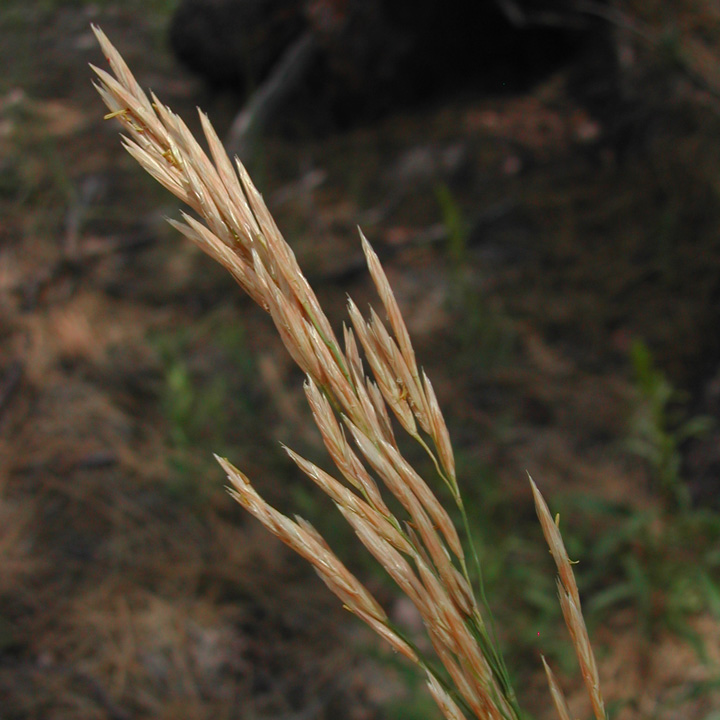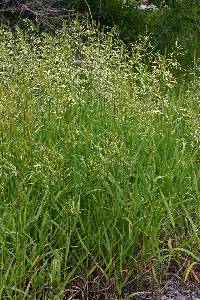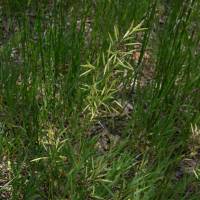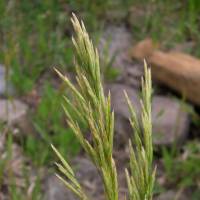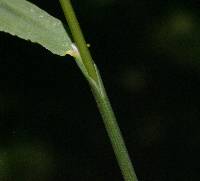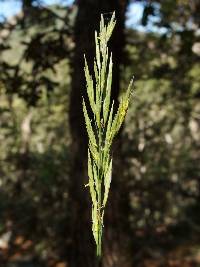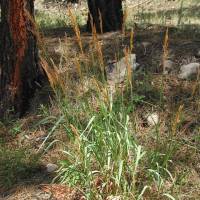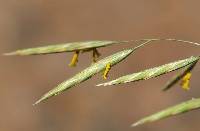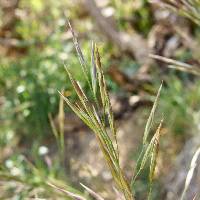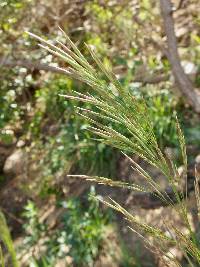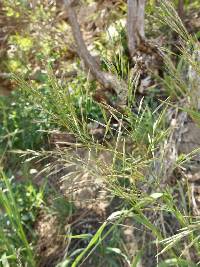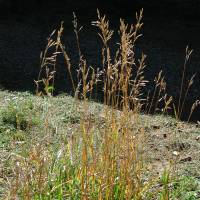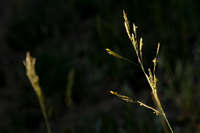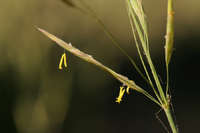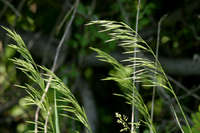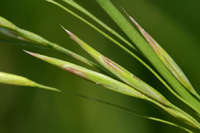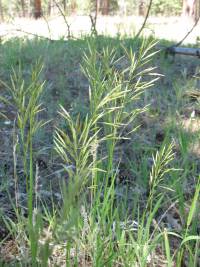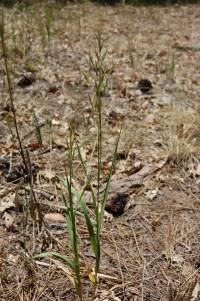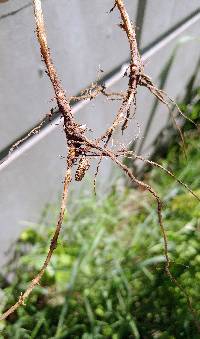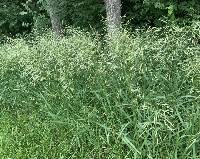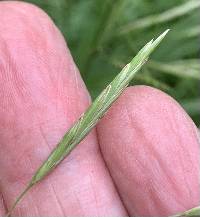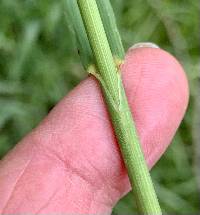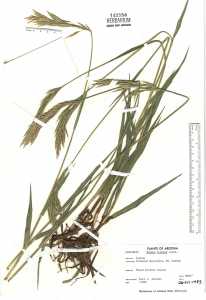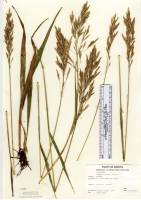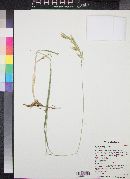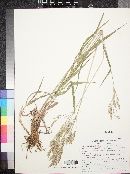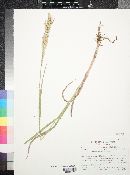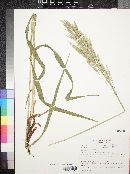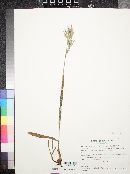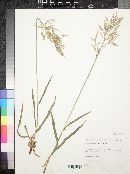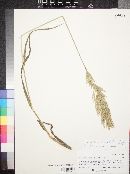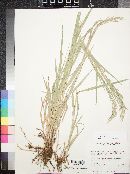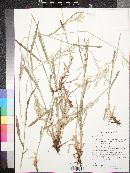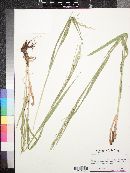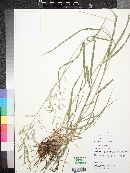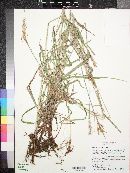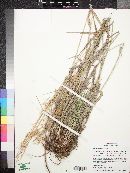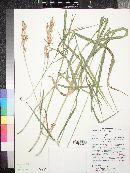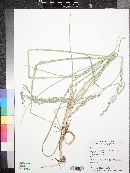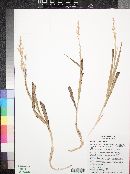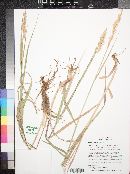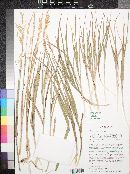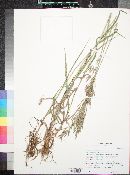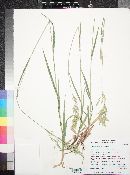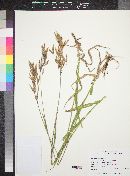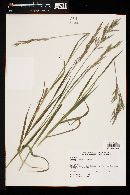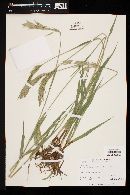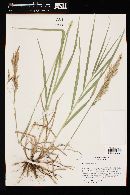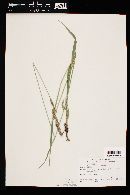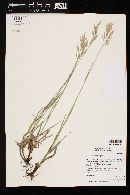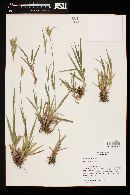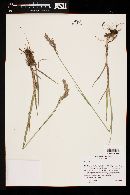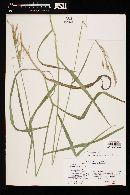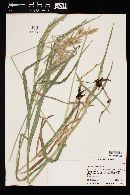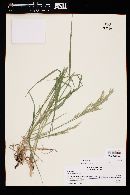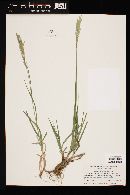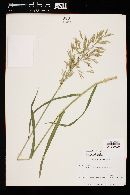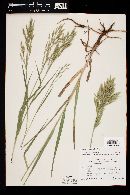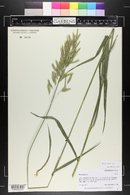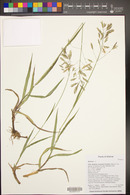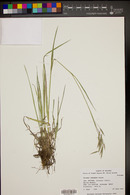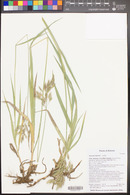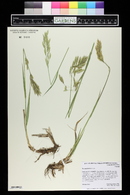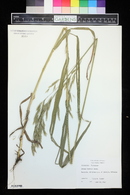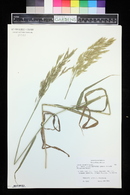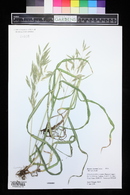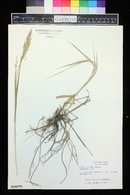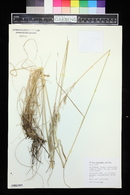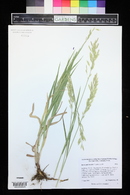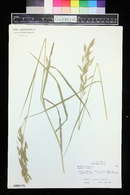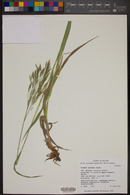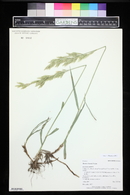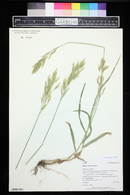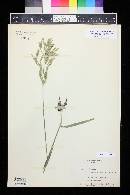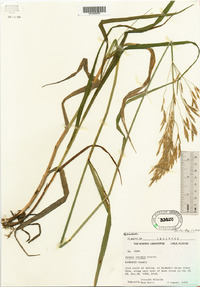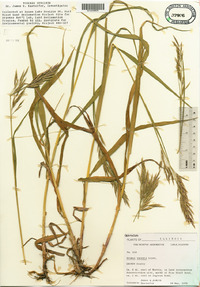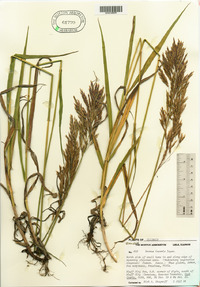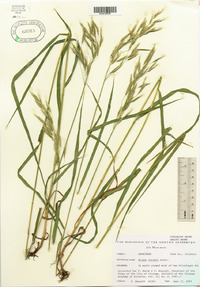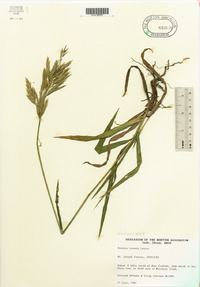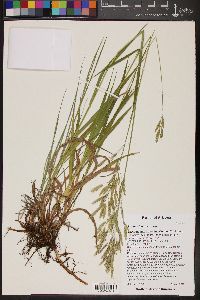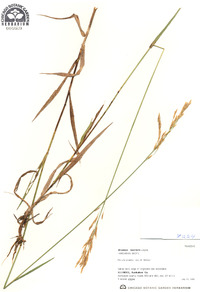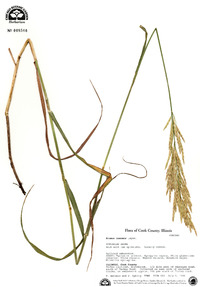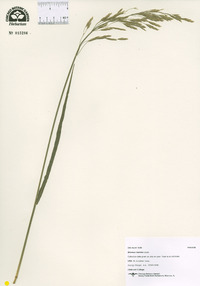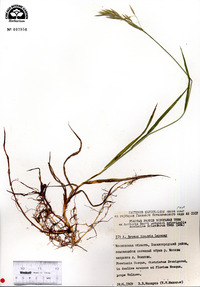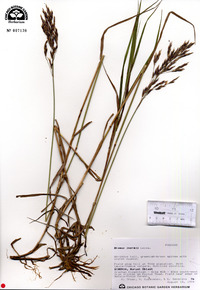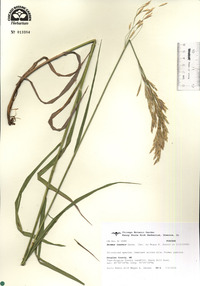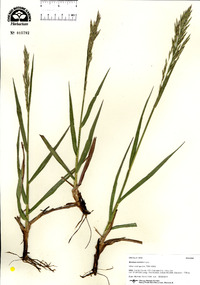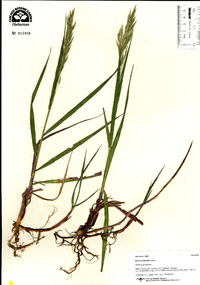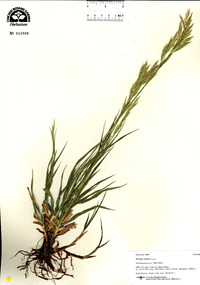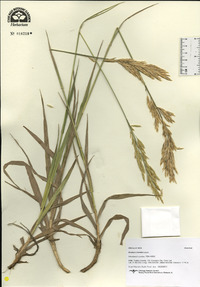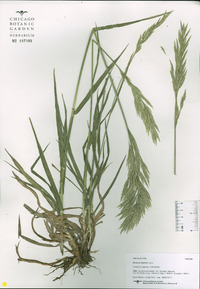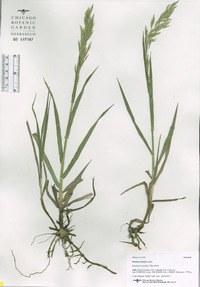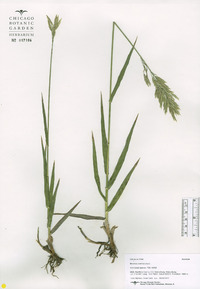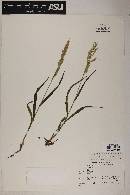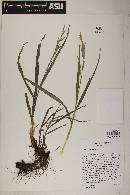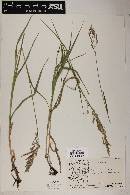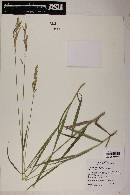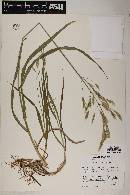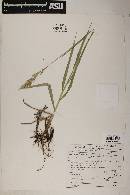
|
|
|
|
Family: Poaceae
Smooth Brome, more...awnless brome, Brome Inerme, Hungarian Brome
[Bromopsis inermis var. aristata (Schur) Tzvelev, moreBromus inermis f. aristatus (Schur) Drobow, Bromus inermis f. bulbiferus Moore, Bromus inermis f. proliferus Louis-Marie, Bromus inermis f. villosus (Mert. & Koch) Fernald, Bromus inermis var. coloradensis (Vasey ex Beal) Kartesz & Gandhi, Bromus inermis var. divaricatus , Bromus inermis var. villosus (Mert. & Koch) Beck, Bromus inopinatus C. Brues & B. Brues, Bromus laxus Hornem., Festuca inermis (Leyss.) DC. & Lam., Festuca inermis var. inermis (Leyss.) DC. & Lam., Festuca inermis var. villosa Mert. & Koch, Poa bromoides (Leyss.) Mérat, Schedonorus inermis (Leyss.) P. Beauv., Zerna inermis (Leyss.) Lindm.] |
Plants perennial; rhizomatous, rhizomes short to long-creeping. Culms 50-130 cm, erect, single or a few together; nodes (2)3-5(6), usually glabrous, rarely pubescent; internodes usually glabrous, rarely pubescent. Sheaths usually glabrous, rarely pubescent or pilose; auricles sometimes present; ligules to 3 mm, glabrous, truncate, erose; blades 11-35(42) cm long, 5-15 mm wide, flat, usually glabrous, rarely pubescent or pilose. Panicles 10-20 cm, open, erect; branches ascending or spreading. Spikelets 20-40 mm, elliptic to lanceolate, terete to moderately laterally compressed, sometimes purplish, with (5)8-10 florets. Glumes glabrous; lower glumes (4)6-8(9) mm, 1(3)-veined; upper glumes (5)7-10 mm, 3-veined; lemmas 9-13 mm, elliptic to lanceolate, rounded over the midvein, usually glabrous and smooth, sometimes scabrous, margins sometimes sparsely puberulent, the basal part of the backs less frequently so, apices acute to obtuse, entire; awns absent or to 3 mm, straight, arising less than 1.5 mm below the lemma apices; anthers 3.5-6 mm. 2n = 28, 56. Bromus inermis is native to Eurasia, and is now found in disturbed sites from Alaska and most of Canada south through most of the United States, except the southeast. It has also been used for rehabilitation, and is planted extensively for forage in pastures and rangelands from Texas to Alaska and the Yukon Territory. Bromus inermis is similar to B. pumpellianus, differing mainly in having glabrous lemmas, nodes, and leaf blades, but a lack of pubescence is not a consistently reliable distinguishing character. Bromus inermis also resembles a recently introduced species, B. riparius, from which it differs primarily in its shorter or nonexistent awns. FNA 2007, Gould 1980 Common Name: smooth brome Duration: Perennial Nativity: Non-Native Lifeform: Graminoid General: Strongly rhizomatous perennial, with erect stems 50-130 cm, singly or a few together, 3-5 nodes, usually glabrous, rarely pubescent, with glabrous sheaths, rarely pubescent or pilose. Vegetative: Blades thin, 11-35 cm long, 5-15 mm wide, flat, glabrous, rarely pubescent or pilose, scabrous on margins; ligules to 3 mm, membranous to erose ciliolate. Inflorescence: Open erect panicle 10-20 cm, branches ascending or spreading; spikelets 20-40 cm, elliptic to lanceolate, terete to moderately laterally compressed, brownish to bronze colored at maturity, purplish when young, with 8-10 florets; glumes subequal, glabrous, lower 6-8 mm, weakly 1 veined, upper 7-10 mm, 3-veined; lemmas 9-13 mm, elliptic to lanceolate, rounded over midvein, glabrous and smooth, margins sometimes sparsely puberulent, apices acute to obtuse, entire, awns absent or to 3 mm, straight, arising less than 1.5 mm below the lemma apices. Ecology: Found on disturbed soils, often in flats and pastureland from 6,000-9,000 ft (1829-2743 m); flowers June-September. Notes: Distinguished by the strongly rhizomatous nature and short awns. Ethnobotany: Unknown Etymology: Bromus is from Greek bromo, for stinking, while inermis means unarmed or without prickles. Synonyms: None Editor: SBuckley, 2010 Culms 5-10 dm from long rhizomes with dark brown scales; stems, sheaths, and blades glabrous, or the stems finely pubescent at the nodes; blades 8-15 mm wide; auricles vestigial or none; ligule 0.5-1 mm; infl 1-2 dm, open at anthesis, later contracted, often with 4-10 branches from a node; spikelets 15-30 mm, ca 3 mm wide, 7-11-fld; first glume 4-8 mm, 1-veined, the second 7-11 mm, 3-veined; lemmas 10-12 mm, 3- or 5-veined, the outer pair of veins often inconspicuous, the body obtuse or retuse, glabrous or scabrous, awnless or with an awn to 2.5 mm; 2n=28, 42, 56, 70. Native of Europe, cult. for forage and often escaped; Que. to Minn., Alta., and the Pacific, s. to Md., O., Mo., and N.M. Gleason, Henry A. & Cronquist, Arthur J. 1991. Manual of vascular plants of northeastern United States and adjacent Canada. lxxv + 910 pp. ©The New York Botanical Garden. All rights reserved. Used by permission. From Flora of Indiana (1940) by Charles C. Deam I do not know that this species has been intentionally sown to any extent in Indiana but it is now found frequently along railroads and roadsides in sandy soil in the northern half of the state. I found one farmer in Lagrange County who had sown it with success in a field of blow-sand soil. ...... Indiana Coefficient of Conservatism: C = null, non-native Wetland Indicator Status: FACU Deam (1929): This grass was introduced into the United States about 1884, and up to 1896 over 600 parcels of seed had been sent to all parts of the U.S. It is drought resisting, hence was especially recommended for some of our western sates. It will grow in almost all kinds of soils, but appears to prefer a loose sandy one. It can scarcely be recommended to any one in Indiana .... I first found this grass in 1912 along the railroad south of Kokomo. At that time it had spread for several rods, forming a complete mat. I revisited the place in 1922, and found it had spread widely along the railroad and along an intersecting highway, and had become a perncious weed, as it crowded out the blue grass as far as it reached. |
|
|
|

